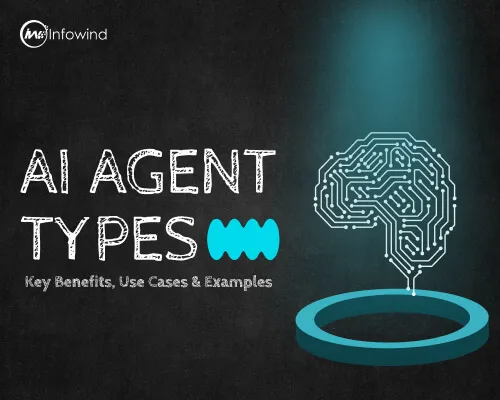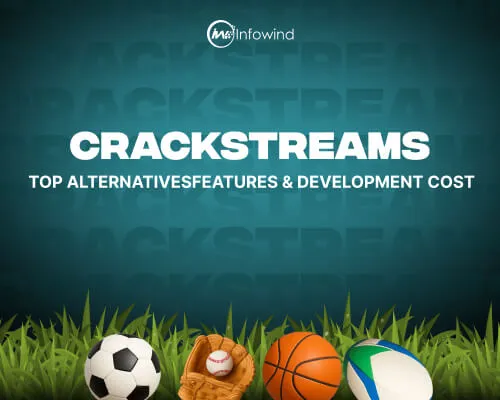The world identifies Python as a top programming language that maintains both versatility and widespread popularity. The language stands out because of its straightforward design together with its readable code which enables adaptability across numerous business sectors. The number of regular Python developers reaches 8.2 million and maintains the top position among three global programming languages during 2026. The TIOBE Index shows Python now holds more popularity than Java and C and maintains its status as the most-used language for an extended period of time.
The extensive use of Python extends to various domains such as web development, together with artificial intelligence (AI), data science, automation, and software engineering. Large corporations such as Google, Netflix, and Instagram use Python to develop their scalable applications as well as machine learning models.
This blog document introduces Python’s historical timeline with important events combined with its dramatic evolution over time. The essay examines how Python continues to affect the tech industry as a major operational force today. The path through Python’s development provides foundational knowledge for both novice and seasoned programmers who want to understand this important programming language better.
The Origins of Python
Who Created Python?
Guido van Rossum developed Python during the late 1980s when he worked at CWI. He had a background in both computer science and mathematics. He developed frustration with existing programming languages at Centrum Wiskunde & Informatica (CWI) in the late 1980s while working there during his time. Van Rossum developed Python after observing ABC language’s suitable teaching features but poor adaptability and sought a programming solution that combined accessibility with strength.
When & Why Was Python Created?
During his Christmas break of 1989, van Rossum initiated the creation of the Python programming language. The language’s author wanted to establish a programming system that provided easy-to-understand code and system flexibility for use in general applications. The official release of Python happened in February 1991 through version 0.9.0. This first release contained three key features, namely exception handling along with functions and modules that formed the base for its later expansion.
Python chose to distinguish itself from other languages through the adoption of indentation systems instead of curved brackets which proved vital for new as well as expert programmers.
The story of Python includes its transformation from a hobby development to its status as a global leading programming language. Reading ease, broad libraries, and adaptability have turned Python into the primary selection of developers in web creation, AI applications, and data research thus cementing its position within technological domains.
The Evolution of Python: Major Milestones
Python 1.x (1991–2000)
Python 1.0 became the inaugural release of the Python programming language when it appeared in 1991. The initial 1.x Python version set the fundamental attributes that characterize the language to this day by promoting readability alongside extensibility and simplicity. Python 1.x (1991-2000) provided developers with an easy learning experience because of its clean syntax and its alternative indentation method instead of braces. During the late 1990s, developers began adopting Python for scripting functions and automation purposes, which resulted in its recognition as an adaptable language suitable for new programmers.
Python 2.x (2000–2010)
Python 2.0 introduced its major framework update when it became available in 2000. Python 2.0 provided users with several strong new features, among others:
- Python gained list comprehension during this period as a tool that improved the generation of lists through shorter code.
- The reference-counting garbage collection method introduced better reference management in Python.
The major problem with Python 2.x releases involved maintaining backward compatibility between versions 2 and 3. Several software libraries were developed for Python 2, but this made the upgrade process challenging. Communication difficulties split the Python platform into two parts because developers maintained Python 2 compatibility for many years.
Citizenry launched “2to3” conversion tools in addition to official support policies to enhance the process of moving between versions. Python 2 reached its end-of-life after receiving support for almost 20 years in 2020.
Python 3.x (2008–Present)
In 2008, the Python 3.x version hit the market and brought modern programming features to establish dominance in the Python ecosystem. Key improvements include:
- Better Unicode support, enabling seamless handling of multilingual data.
- Type hints function as readability tools that produce static analysis opportunities for developers.
- Through async programming, developers can produce efficient code besides writing non-blocking code.
The current standard version for Python programming is Python 3.x because it receives enduring maintenance support with regular updates. The active development allows the programming language to adopt cutting-edge technologies thereby establishing itself as a foundational framework for AI together with data science web-development automation and AI applications.
Python’s Growth & Adoption in the Tech World
How Python Became Popular
The development of Python programming language shows swift growth together with an expanding user base throughout history. One factor that drives its popularity is its position as an open-source project alongside its deep connection with an energetic group of developers. Users find Python appealing because of its quick learning route that comes from simple syntax and readability, which attracts novices, yet advanced features make it attractive to experts.
Major technology companies, including Google, together with NASA Netflix, and Dropbox, incorporated Python programming for their fundamental applications. The Google corporation relies heavily on Python to develop machine learning capabilities and backend infrastructure, and NASA uses the language for scientific processing and data evaluation. Major companies gave their official support to Python, which substantially increased its market profile.
Python in Data Science & AI
The gaming change in both data science and artificial intelligence (AI) resulted from Python’s recent growth. The combination of basic syntax in Python with accessible robust libraries makes it the primary selection language for both ML and big data and AI work.
Key libraries include:
- TensorFlow, together with Kera, represents among the most popular tools for deep learning and neural networks.
- Pandas and NumPy – essential for data manipulation and analysis.
- The machine learning model, along with the data mining application, uses Scikit-learn as its preferred library.
Developers and data analysts need Python skills as a mandatory capability because of its overwhelming dominance in Artificial Intelligence and data science fields.
Python for Web Development & Automation
The web development process, as well as automation activities, is heavily dependent on Python programming through its numerous frameworks. Frameworks like:
- Dynamic applications with high scalability exist through the Django framework.
- Flask – a lightweight framework for smaller, flexible projects.
Python serves as the foundation for DevOps functions along with serving multiple purposes in scripting and automation processes. The simplicity of Python provides optimal conditions to write automation scripts which boost IT operation productivity levels through repetitive process automation.
Python in Emerging Technologies
Python achieved primary positioning in emerging technologies mainly because of its adaptable nature.
- IoT systems benefit from Python because developers use it to build linked device systems while processing collected data.
- The penetration testing procedures and data analysis tasks along with automated security operations applications use Python as their programming language in cybersecurity.
- The clear and straightforward nature of Python enables developers to construct blockchain applications for which they select this popular language.
- Quantum computing development receives momentum through the Python frameworks Qiskit and Cirq, which drive quantum research and development activities.
The versatility of Python, together with its ongoing advancement process makes it a fundamental force that drives technological progress into the future.
Challenges & Limitations of Python (and How It Overcame Them)
Pain Point: Python’s Performance Limitations
The main challenge in Python programming arises when it runs slower than compiled languages such as C++ and Java. The interpretation process of Python results in slower performance rates during tasks that require intense CPU usage. Its execution speed makes Python unsuitable for high-speed processing tasks within real-time systems together with large-scale simulations.
Solution:
Developers utilize several performance-boosting tools to improve their applications.
- Cython provides a C extension compiling Python code to achieve faster execution.
- PyPy functions as a different Python interpreter which employs JIT compiler technology to enhance code processing speed.
- Numba optimizes numerical Python code to operate at C-level speeds.
Efficient large data handling occurs through Python’s optimized libraries, which include Pandas and NumPy in their ecosystem and reduce performance limitations during operations.
Pain Point: Global Interpreter Lock (GIL) and Multithreading Issues
The Global Interpreter Lock (GIL) inside CPython serves as a thread execution prevention mechanism to stop various threads from running Python bytecode at the same time. The GIL mechanism simplifies memory handling yet it restricts six-way parallelism execution in threads making Python execute tasks slower than alternatives for processors demanding applications.
Solution: The technical strategy for overcoming GIL-related constraints consists of three methods.
- Separate processes function through multiprocessing instead of using threads, thus enabling parallel execution.
- Python gains greater efficiency for I/O-bound operations with the implementation of async programming approaches that support asynchronous I/O.
- The execution capabilities of multithreaded applications get improved through the use of Jython or IronPython which do not possess GIL restrictions.
Pain Point: Python’s Suitability for Mobile & Embedded Systems
Previously, Python faced limitations in mobile application creation because it ran slower than other options while using more memory space. The mobile ecosystem does not provide native support for Python because it differs from Java (Android) and Swift (iOS).
Solution:
Python serves mobile and embedded systems requirements through particular frameworks established by developers.
- Mobile development using Python is made possible through Kivy, along with its cross-platform capabilities for multi-touch application creation.
- BeeWare serves as a development toolkit enabling iOS and Android native application creation together with desktop application development through Python programming code.
Embedded systems developers and IoT professionals use MicroPython and CircuitPython to implement Python for microcontrollers because these compact Python variants are suitable for embedded applications.
The adaptability combined with the ecosystem evolution of Python has made it maintain its position as one of the most powerful, versatile languages used in technology.
The Modern Impact of Python
Why Python Remains a Top Programming Language
Python programming language underwent historical changes that transformed it into a formidable language in current use. The programming language Python maintains a strong position in the top 3 languages based on surveys from the TIOBE Index and Stack Overflow which shows it exceeds both Java and C++.
The following factors describe why Python continues to be popular:
- The extensive open-source framework of Python includes TensorFlow alongside Django and NumPy libraries which enable developers to create different applications from artificial intelligence to web development purposes.
- Python gains continuous updates and extensive documentation because of its large developer community, numbering in the millions globally.
- The software operates across various platforms because it functions without issues on Windows macOS and Linux thus establishing valuable versatility.
The combination of simplicity and flexibility with readability makes Python a fundamental language choice for developers and engineers together with data scientists.
Python’s Role in Education & Coding Bootcamps
The language choice for educational purposes relies on Python due to its straightforward syntax and clear readability. Python has become the fundamental programming language that schools and other educational institutions, along with coding boot camps, implement.
The following aspects drive educators to adopt Python as their language of preference:
- The Python language provides straightforward syntax, which enables beginner students to tackle problems directly instead of worrying about complicated syntax regulations.
- Actual business applications of Python enable educational institutions to teach this programming language to students so they develop skills that align with data science positions, web development roles, and AI systems.
- Learning Python works best for students who teach themselves, thanks to its large collection of cost-free resources available on Codecademy, Coursera, and Udemy.
Coding bootcamps choose Python because its quick development abilities match perfectly with prototype development and creating complete stack database systems.
The Future of Python
Python’s future appears extremely promising because it combines the expanding adoption of new technologies. Python’s future will be shaped by three main developing trends, which are:
- The programming dominance of Python in AI and ML functions stands strong due to TensorFlow together with PyTorch and Scikit-learn libraries.
- Cloud Computing and Automation – The development of cloud services and DevOps makes Python a leading tool for automation and orchestration responsibilities.
- The future of Python will become more competitive for high-performance applications because developers create better performance alongside scalability improvements with methods like HPy and JIT compilers and Cython.
- Python maintains growing importance in quantum programming through Qiskit, which enables developers to perform quantum algorithm development.
The Python programming language establishes its position to remake future technological innovations by continuously expanding its systems and adjusting tools across AI applications and advanced automation platforms.
Conclusion
Python began its existence as an obscure programming language in the late 1980s yet advanced to become an internationally prominent programming authority. Its straightforward design, together with its broad capabilities and extensive library collection,n positions Python as the central for Cthatch drives website creation as well as artificial intelligence development and statistical computations and automation procedures. The open-source community thrives around Python as its development continues, making it a primary selection among developers throughout the world.
The present epoch marks an ideal period for developers at all skill levels to adopt Python’s capabilities. You can begin your Python learning journey through interactions with industry practitioners while telling them about your Python-related experiences.
- The impact of Python on web development will become your focus in this segment
- You will find a list of leading Python web development firms based both in India and the USA.
- Working with a trustworthy Python web development company enables you to materialize your concepts.
Python presents an increasingly promising future to new learners so they must join the experimentation and growth of its developing ecosystem.






